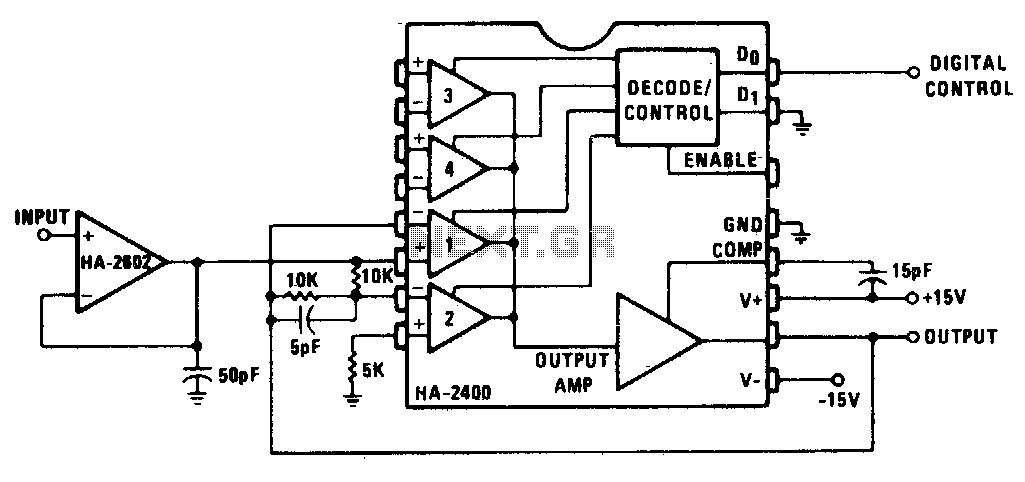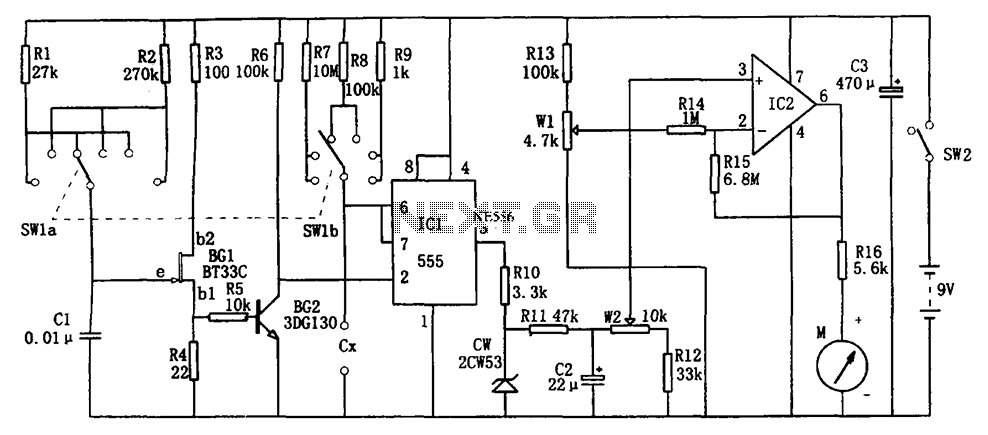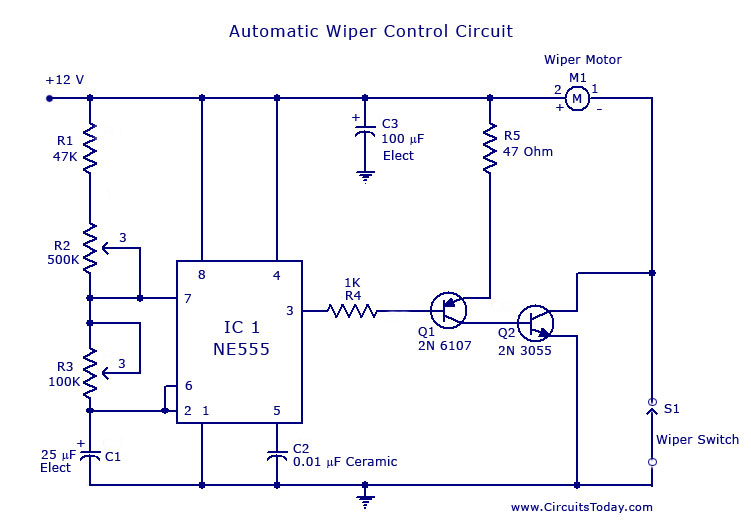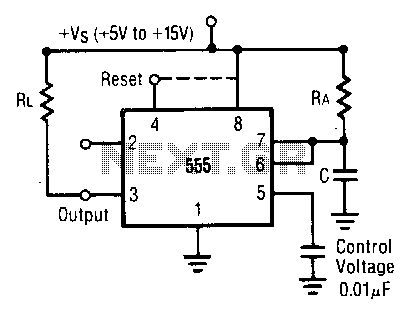
555 monostable pulse width modulator
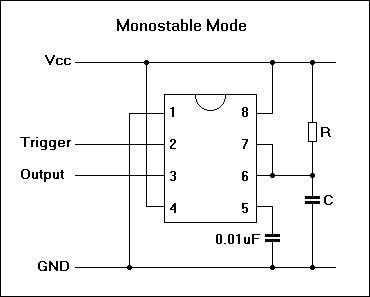
In the 555 datasheet, there is a pulse width modulation circuit that resembles this one, with the only difference being that pin 5 is labeled as 'audio'.
The 555 timer IC is a versatile device commonly used in various applications, including pulse width modulation (PWM) circuits. In the context of PWM, the 555 timer can effectively control the duty cycle of a signal, which is essential for applications such as motor speed control, light dimming, and audio signal modulation.
In the described circuit, the 555 timer operates in astable mode, generating a continuous square wave output. The frequency and duty cycle of this output can be adjusted by varying the resistances and capacitance connected to the timer. The circuit typically includes two resistors (R1 and R2) and a capacitor (C1) connected to the discharge (pin 7), threshold (pin 6), and trigger (pin 2) pins of the 555 timer.
In this specific configuration, pin 5 is designated for audio modulation, allowing the circuit to modulate audio signals based on the PWM output. This can enhance sound quality and control over audio devices. The audio signal can be introduced at this pin, which may influence the timing characteristics of the PWM output, enabling dynamic sound modulation.
It is crucial to ensure proper component selection to achieve the desired frequency and duty cycle. The resistor values, in combination with the capacitor, determine the oscillation frequency according to the formula:
\[ f = \frac{1.44}{(R1 + 2R2)C1} \]
Where 'f' represents the frequency in Hertz, 'R1' and 'R2' are the resistance values in ohms, and 'C1' is the capacitance in farads.
Overall, the integration of an audio modulation feature at pin 5 enhances the functionality of the 555 timer in PWM applications, making it suitable for a variety of electronic projects that require precise control over signal characteristics.In the 555 datasheet they have a pulse width modulation circuit similar to this with the only difference being that they have pin 5 labelled as `audio .. 🔗 External reference
The 555 timer IC is a versatile device commonly used in various applications, including pulse width modulation (PWM) circuits. In the context of PWM, the 555 timer can effectively control the duty cycle of a signal, which is essential for applications such as motor speed control, light dimming, and audio signal modulation.
In the described circuit, the 555 timer operates in astable mode, generating a continuous square wave output. The frequency and duty cycle of this output can be adjusted by varying the resistances and capacitance connected to the timer. The circuit typically includes two resistors (R1 and R2) and a capacitor (C1) connected to the discharge (pin 7), threshold (pin 6), and trigger (pin 2) pins of the 555 timer.
In this specific configuration, pin 5 is designated for audio modulation, allowing the circuit to modulate audio signals based on the PWM output. This can enhance sound quality and control over audio devices. The audio signal can be introduced at this pin, which may influence the timing characteristics of the PWM output, enabling dynamic sound modulation.
It is crucial to ensure proper component selection to achieve the desired frequency and duty cycle. The resistor values, in combination with the capacitor, determine the oscillation frequency according to the formula:
\[ f = \frac{1.44}{(R1 + 2R2)C1} \]
Where 'f' represents the frequency in Hertz, 'R1' and 'R2' are the resistance values in ohms, and 'C1' is the capacitance in farads.
Overall, the integration of an audio modulation feature at pin 5 enhances the functionality of the 555 timer in PWM applications, making it suitable for a variety of electronic projects that require precise control over signal characteristics.In the 555 datasheet they have a pulse width modulation circuit similar to this with the only difference being that they have pin 5 labelled as `audio .. 🔗 External reference
